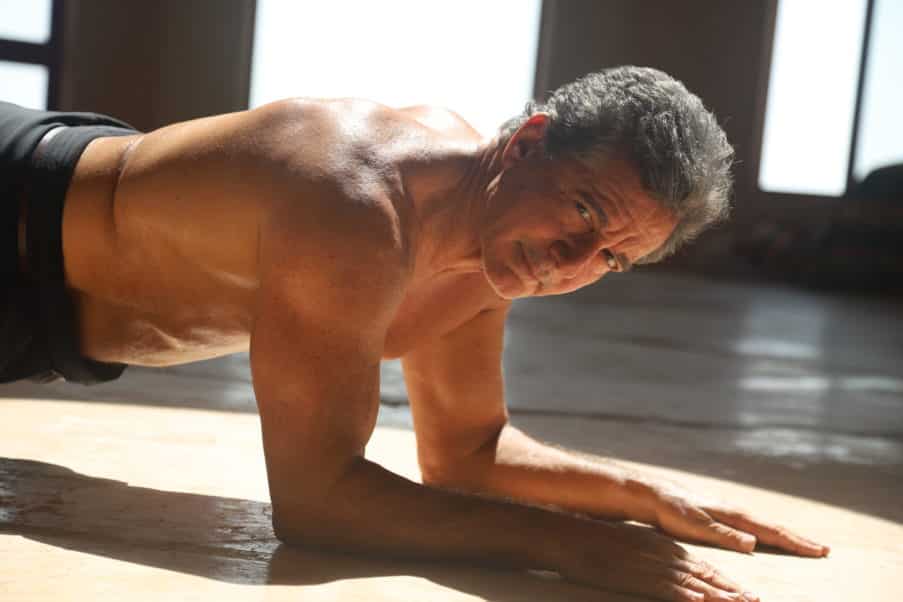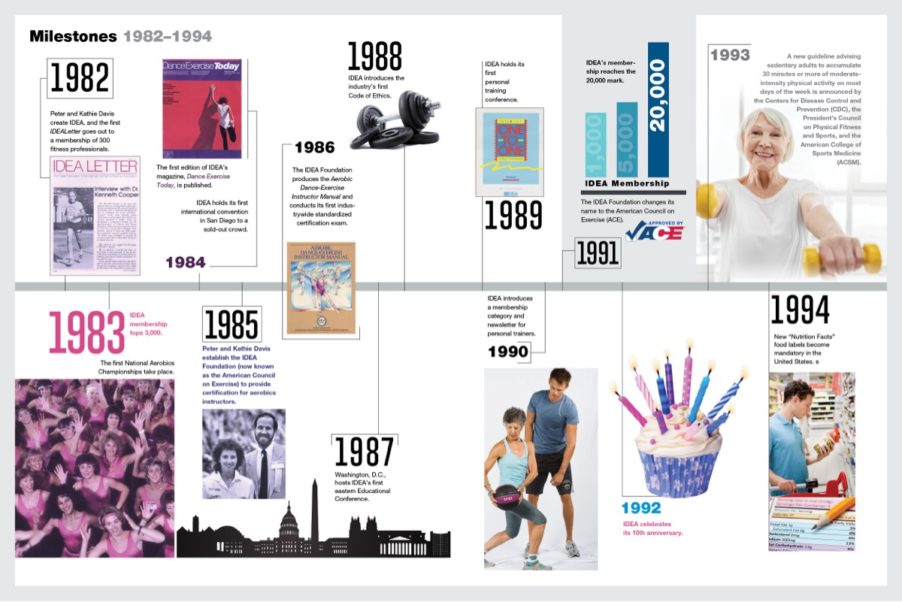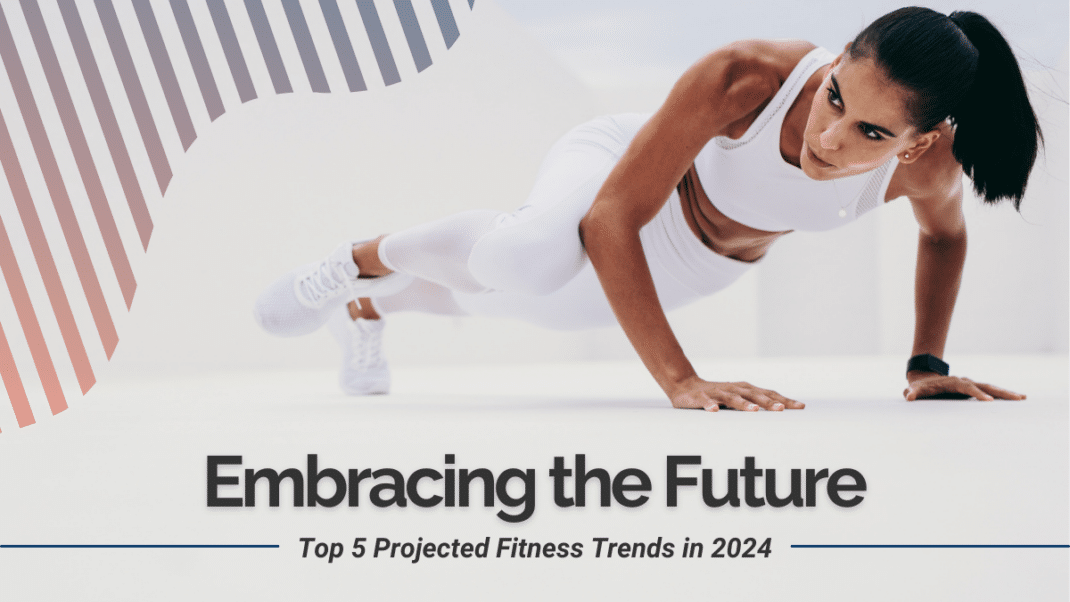Q&A: Foundational Fitness Insight from Gilad Janklowicz
This fitness industry pioneer has been helping bodies stay in motion for more than 40 years—and he’s still going strong.

The early 1980s gave birth to many fitness movements and professional organizations, including IDEA Health & Fitness Association (1982). The idea of organized and professionally led exercise wasn’t new, but it also wasn’t mainstream. Consumers were aware of Jack Lalanne, who had been on the air since 1951, and Jazzercise® was well established. People weren’t entirely sure what kind of shoes to wear or which apparel was the best fit, but exercise fever was palpable.
Back then you couldn’t find a gym on almost every corner like you can now, nor could you purchase a workout video for less than $50 (Jane Fonda’s Workout video cost $59.95, the equivalent of $182.82 in today’s dollars). The fitness industry’s future was being planted, and no one knew how much it would grow, but the collective energy fertilized the potential.
It was from this ripe field of fitness promise (and grapevines) that Gilad Janklowicz emerged — and what staying power he’s had! The Israeli-born fitness pioneer, best known for Bodies in Motion and Total Body Sculpt with Gilad, has now reached a new milestone: having the longest-running fitness show — 40 years and counting— in the United States (and probably the World). What has he learned about helping others find their path to health and wellness over four decades, and what advice does he have for other fitness professionals?

Q: How did you get started in the fitness industry?
A: I was a devoted high school athlete, and I was an Olympic hopeful in the decathlon until I was injured. I was also a fitness instructor in the Israeli military. When I moved to Los Angeles to attend the UCLA film school, I started teaching fitness at the right time, when aerobics became popular. The late 1970s and early 1980s is when group fitness really took off. I worked at a health club called World for Men, which was across the street from World for Women—it was totally separated.
I remember, at least at first, we called what we did Slimnastics. Basically, we played music and moved, did pushups, sit ups and a lot of jumping jacks—all to music. The whole concept developed from there. Then I worked at the Sports Connection, where I was one of the first instructors. From there I worked at Gilda Marks’ studio in Los Angeles and turned down an offer with her to open a studio in New York. Instead, I went to Hawaii in 1981 to work at the Honolulu Club as a group fitness instructor. It was during that time that my life changed.

Q: What initial feedback did you get when you started Bodies in Motion? Did you need to overcome any challenges or objections to get on the air?
A: The initial feedback was good, and I think the timing was also right. We launched the half-hour show Bodies in Motion in 1983 and, to make a very long story short, I found an agent who ran a station in Reno, Nevada, who took it upon himself to syndicate the show. He presented it to ESPN. They were looking at several different concepts and chose my fitness show to be their first one in 1985. There were many other people with their own shows at the time, of course, but everyone had a different format. One unique angle to my show was the fact that I was shooting outdoors, on the beaches of Hawaii. We incorporated the beautiful scenery, which viewers said was uplifting and inspiring. My idea was very well received and the reviews were good. People loved the fact that they could exercise at home in front of the television (and visit Hawaii everyday).
I was adamant about my workout show being very practical and to the point, no time wasted. “This is what we’re going to do today, let’s get to work!” There were no guest appearances or mindless talk, it was all action. Thirty minutes is not a lot of time, so I knew we had to maximize it, especially since, with commercial breaks, it was only 22 minutes of actual movement. The show hit a chord with people everywhere and played at 6 a.m. and again at noon, when a lot of people were home.

Q: How was your class programming different from other televised offerings at the time?
A: It was important to me that we presented a very well-choreographed and easy-to-follow show, something that would be as enjoyable to watch as it was to participate in. I took my own personal athletic experience, which included some occasional martial arts, and combined it with what I knew about dance exercise to create something that was a little bit eclectic. It was great cross-training.
Moving in perfect unison was one thing we focused on, and we rehearsed quite a bit, at least four times a week for 4 months, so that we were like a team. I also wanted the moves to be effective and results-oriented for the viewer. I went through the entire repertoire of exercises we’d be doing for a specific season so by the time we were finished rehearsing, and it was time to shoot, everyone could pretty much second guess what I was going to do.
Another reason this approach was important to me was because it allowed me to stop what I was doing and talk to (coach) the person at home and focus on them. I loved reaching out to the person on the other side of the screen, and I had the confidence of knowing my backup partners were keeping me in line. They kept the routine and count going so that I could step out, connect on a different level with the viewer and jump back in. I wanted to offer a special fitness experience for the person watching — not just be a talking head or personality.

Q: You have a long, varied athletic history. Was there a time in your life when you had to deal with injuries? If so, how did you handle it?
A: I’m the poster boy of injuries because I tend to push myself to and beyond the limit, which is not something I recommend to the average person. I’ve pretty much suffered every injury. It was, in fact, an injury that dashed my Olympic dream. I have certainly had my share of setbacks.
I dealt with intense pain, but perhaps due to my stubbornness, I pushed through to come back better. You must know your own body and respect your true limits. I know I’m not 28 anymore, but being able to move freely is so important. Being unable to move the way you are used to is a humbling experience, to say the least. People tend to give up when they get injured. However, a lot of times it’s better to keep going and not give up. The fact that I had a fitness background, with all the years of training and muscle memory, helped me recover. If I couldn’t do a certain move, I would modify and find other ways to keep my body in motion.
Fitness professionals can help inspire people to not give up on themselves. It’s also important, of course, to understand the mindset of a client who is in constant pain, for whatever reason, and to meet them where they are. It’s not always about physical ability; it’s about mental obstacles. Sometimes just walking around the block is a victory.

Q: When you started in the industry, the roles of personal trainer and group fitness instructor weren’t yet defined, nor was “fitness professional” considered a viable career path. How can we keep growing?
A: I think organizations like IDEA had the right idea to work toward professionalizing fitness and bringing everyone under the same umbrella, so to speak, and to help lay the groundwork for standards and certifications, which was very much needed at the time. The industry was very loose back then, so having some type of checks and balances has been key to growth. The focus on education, knowledge, science and more gave us legitimacy and is one reason so many people have had successful careers and why today you see a gym on every corner.
Consumers have become savvier and more invested in becoming fit, but there’s still a knowledge gap we need to help fill because I see a lot of people doing things that make me cringe, and I wish I could jump in and help them. They just need a little guidance, and that’s where the industry needs to continue to meet them where they are, and that can be hard when there’s so much information static.
Maybe now we’re at a place where we need to get a little more focused to help people customize movement to their natural abilities—even more than what we’ve been doing. Perhaps we’ve reached the point where we can get incredibly specific for age, body types and genetic abilities. For example, you have a client in front you and ask “Who is this person and how can I match my experience with their needs? Do I program exercises in the pool? Do I program more sprinting exercises or do I focus on slow and moderate? This field is limitless, and we’re learning more as we go along. The industry is relatively new, and there’s still a lot to explore.
Q: What is the biggest challenge fitness professionals face today?
A: There is so much information available, and to be able to identify trends is one thing, but do you know how and if to apply them? Are you going to make someone new to exercise lift something heavy to satisfy your ego? Or are you going to listen and create a program that they can do (and want to do), regardless of whether it is trending. Taking it step by step and building success into the program is key. There are so many worthy exercise programs out there, but I think it will always be important to return to the foundations and basics. Once you build a foundation, you can test it with new trends. Foundation is number one; without that, you may lose sight of the person you’re trying to help.
Learn more about how Janklowicz is continuing to inspire the world to fitness.
Joy Keller
Joy Keller is the director of marketing communications & PR at IDEA, and has also served as executive editor of IDEA Fitness Journal, IDEA Fitness Manager, IDEA Pilates Today, and IDEA Fit Business Success. She is also a certified personal trainer, indoor cycling instructor and yoga teacher (RYT 200).




